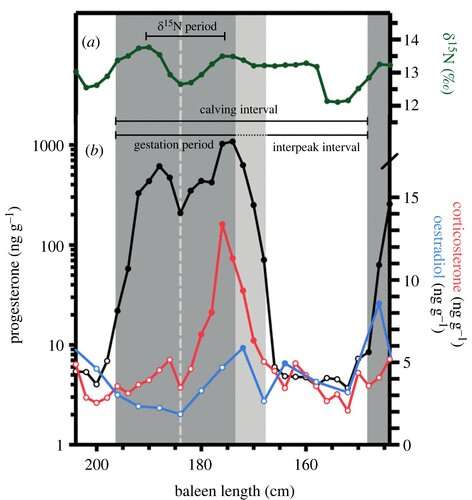July 26, 2023 report
This article has been reviewed according to Science X's editorial process and policies. Editors have highlighted the following attributes while ensuring the content's credibility:
fact-checked
peer-reviewed publication
trusted source
proofread
Bowhead whales may be pregnant for up to 23 months

A team of biologists and aquatic researchers from Suffolk University, Arctic Aquatic Research Division, Fisheries and Oceans Canada, and the Greenland Institute of Natural Resources has found evidence suggesting that female bowhead whales may be pregnant for as long as 23 months. In their project, reported in the journal Royal Society Open Science, the group studied hormones produced by whales killed by Inuit hunters over a 13-year period.
Prior research has suggested that bowhead females are likely pregnant for approximately 14 months—this number was derived by noting fetus size in multiple dead whales. But the whales, the research team found, may be another marine creature that is able to put its pregnancy on pause, allowing the mother-to-be the freedom to choose the best time frame for the birth of her offspring.
To learn more about reproduction in bowhead whales, the researchers collected baleen samples from whales killed during the years 1998 through 2011 by Inuit hunters in Greenland and the Canadian Arctic. When studied closely, baleen samples offer a snapshot of the life the whale, including hormone levels—in particular, progesterone, estradiol and corticosterone. Each is produced during different parts of the pregnancy process.
In studying the hormone levels of the whales over time, the researchers found that the whales appeared to be pregnant for up to 23 months. They suggest baleen females have the ability to put a pregnancy on pause for as long as nine months, which is why a pregnancy can last so long. More research is required, but if the number holds, that would make baleen whales the mammal with the longest pregnancy duration—the current champs are elephants, which have an average pregnancy of approximately 22 months.
The research team acknowledges that there is another possible explanation for the hormone levels they found—the whales were not actually pregnant during early progesterone surges, which are a sign of prolonged estrus. Under such a scenario, the whale would not have been pregnant until as long as 14 months later. In either case, the researchers suggest their work adds to knowledge about reproduction in whales, which may help to preserve populations.
More information: N. S. J. Lysiak et al, Prolonged baleen hormone cycles suggest atypical reproductive endocrinology of female bowhead whales, Royal Society Open Science (2023). DOI: 10.1098/rsos.230365
Journal information: Royal Society Open Science
© 2023 Science X Network





















